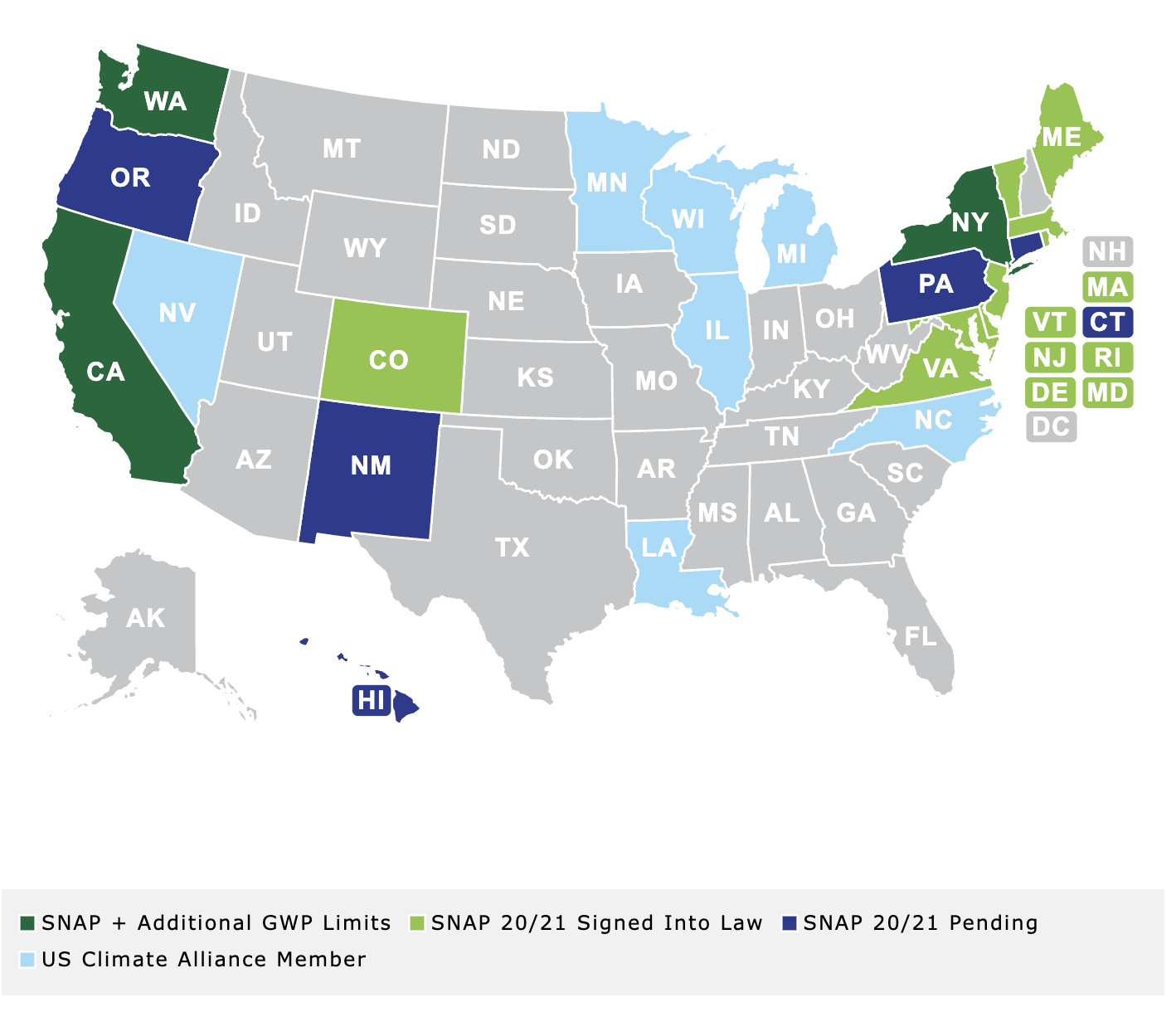Refrigerant Transition Hub
Check out our free refrigerant transition hub, created to help retailers navigate from high global warming HFCs to climate-friendly natural refrigerants.
Passed in 2020, the federal AIM Act authorizes the Environmental Protection Agency (EPA) to phase down hydrofluorocarbon (HFC) refrigerant greenhouse gas emissions by 85% by 2036. Simultaneously, several states have passed—or are working to pass—state-level HFC regulations. With help from our members, we have created a free refrigerant transition hub to help retailers navigate these changes.
This hub, like HFC regulations, is rapidly evolving, so check back often for new and updated resources.
HFC Policy Tracker | Refrigerant Alternatives | Natural Refrigerants Factsheet | Natural Refrigerant Library |
Propane Refrigerant Factsheet | CO2 Adoption Projections - Retailer Survey | Refrigerant Leak Reduction Guide | CO2 Case Study









